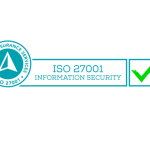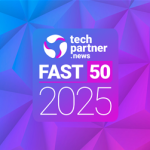5G is rolling out in areas across the nation.. but what does it really mean for everyone? The rollout brings with it challenges and possibilities alike and the implications for businesses are vastly different to those of regular consumers.
For the Consumers
On a consumer focus, 5G-enabled smartphones have increased overall market share in Australia quite substantially over the previous year. IDC has recorded market share growth from 14% in 2020Q1 to 55% in 2021Q1, a significant increase within just 12 months. With the rollout of 5G networks and increasing coverage, Australia’s major mobile telecommunications carriers have placed a heavy marketing focus on how consumers can stream faster, connect quicker and download at faster rates. The true value of 5G doesn’t lie with consumers though…
For the Businesses
Contrary to common belief and the marketing campaigns pushed to the masses by the large telcos, the real benefits of 5G exists with businesses, not consumers looking to stream Netflix in a higher quality!
5G brings with it:
- Faster download speeds with theoretical limits of up to 1Gbps
- Lower latency compared to 4G LTE
- Better communication reliability for fixed services
- Huge potential for Internet of Things (IoT) applications
For businesses, 5G is opening doors with its lower latency and higher speeds, including:
- The potential for conducting surgeries remotely
- Tracking vehicles through IoT devices
- Allowing upload for super high resolution footage and map data quickly
Many IT providers agree that the potential for the use of 5G in business is significant. Ultra-low latency, high-speed communications and reliable connections can mean businesses have the capacity to take on cutting edge technologies. Building business processes around the use of cloud and mobile platforms has been outlined as one of the biggest potentials for 5G.
5G can be seen as a gateway to leveraging consumer focused platforms such as Virtual and Augment Reality in a commercial setting. Similarly, delay-sensitive communications such as the operation of robotics equipment and driverless vehicles are also one step closer to become more reliable and mainstream in the current technological environment. PwC completed an interesting write up on 5G in 2019 and we can see some of those items moving closer to reality today. You can read the PwC article here.
Mobile Vs. NBN
There’s no secret that there has been speculation that 5G is of course the “NBN Killer”. Faster speeds and reliability far above the speeds of some NBN technologies have some thinking 5G will be the silver bullet… although we have a different perspective.
While fixed line communications and connectivity have come a very long way in the last decade, our unique landscape still makes it challenging to connect rural and remote areas. Even with our challenging landscape, NBNCo has pushed hard to upgrade its network and bring reliable fixed line services into the hands of businesses and consumers alike. NBNCo’s commitment to high-speed communications can’t be denied especially with its current focus on business fibre zones across Australia. You can read more about those here.
Wireless technologies stand as an option to fill the connectivity gaps that NBNCo and other fixed line carriers can’t. The potential to deliver high-speed 5G services into rural and remote areas brings potential for rural businesses to utilise cutting-edge technologies. With the increase in remote working and working from home, 5G coverage can provide a level playing field for employees living in remote areas and provide the same level of connectivity as those in metro areas.
Where to from here?
We’ve gone over a lot in this post and there’s likely a lot of questions. Check out the webinar we did with D-Link Australia a little while ago. It provides some more insight into 4G and 5G technologies in business.
Get in touch with us if you’re interested in exploring your connectivity solutions and the possibilities of various technologies in your business.


